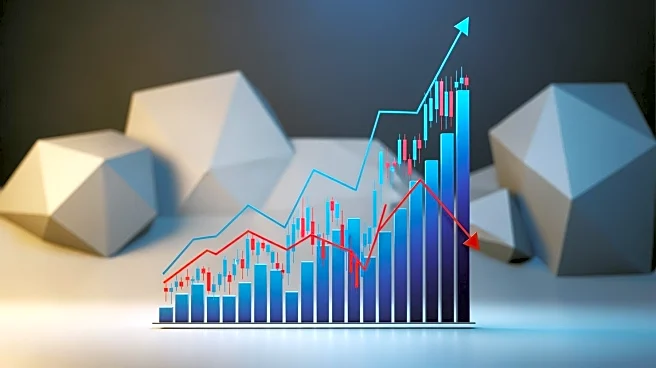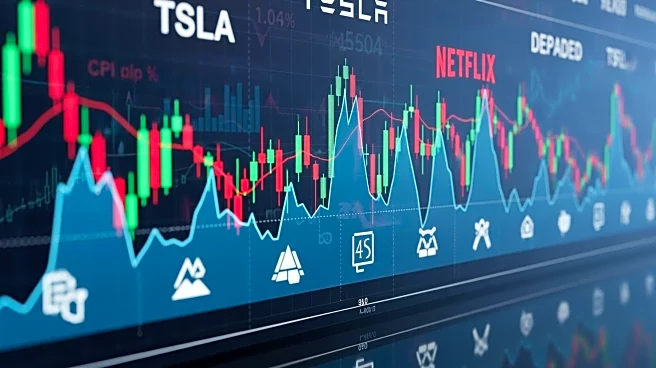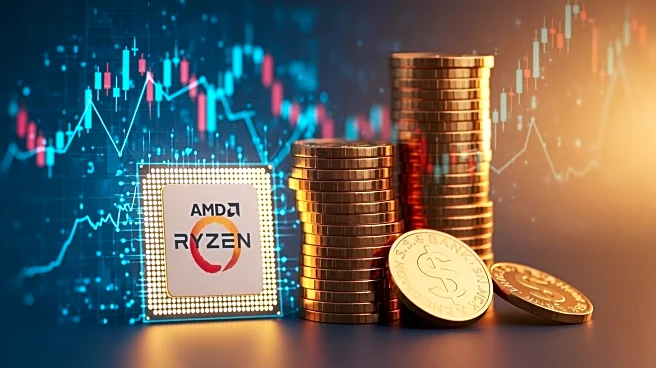What's Happening?
The U.S. stock market is experiencing volatility due to a combination of factors, including concerns over regional bank balance sheets, potential re-escalation of trade tensions with China, and a recent
correction in the cryptocurrency market. The S&P 500 index saw a 1.7% gain over the past week, primarily driven by a rebound on Monday, but remains within a five-week trading range. Investors are also reacting to the Federal Reserve's anticipated rate cuts and the ongoing AI investment boom. Despite these gains, there is an observable increase in market anxiety, with some investors opting to sell off equities, particularly in speculative sectors.
Why It's Important?
This period of market volatility is significant as it reflects broader economic uncertainties and investor sentiment. The potential for increased trade tensions with China could impact global supply chains and economic growth. Additionally, concerns over bank stability and credit conditions could affect financial markets and investor confidence. The Federal Reserve's monetary policy decisions will be closely watched, as they could influence market dynamics and economic stability. Investors and businesses may need to navigate these uncertainties, which could impact investment strategies and economic planning.
What's Next?
As the market continues to experience volatility, investors will be monitoring upcoming earnings reports, which are expected to show year-over-year growth. The Federal Reserve's future rate decisions will also be pivotal in shaping market expectations. Additionally, any developments in U.S.-China trade relations could have significant implications for the market. Stakeholders will need to assess these factors to make informed decisions in the coming weeks.
Beyond the Headlines
The current market conditions highlight the complexities of navigating a post-pandemic economic landscape. The interplay between speculative investments, traditional market indicators, and geopolitical tensions underscores the need for a balanced approach to risk management. The evolving credit landscape and potential shifts in trade policies could have long-term implications for economic growth and stability.












